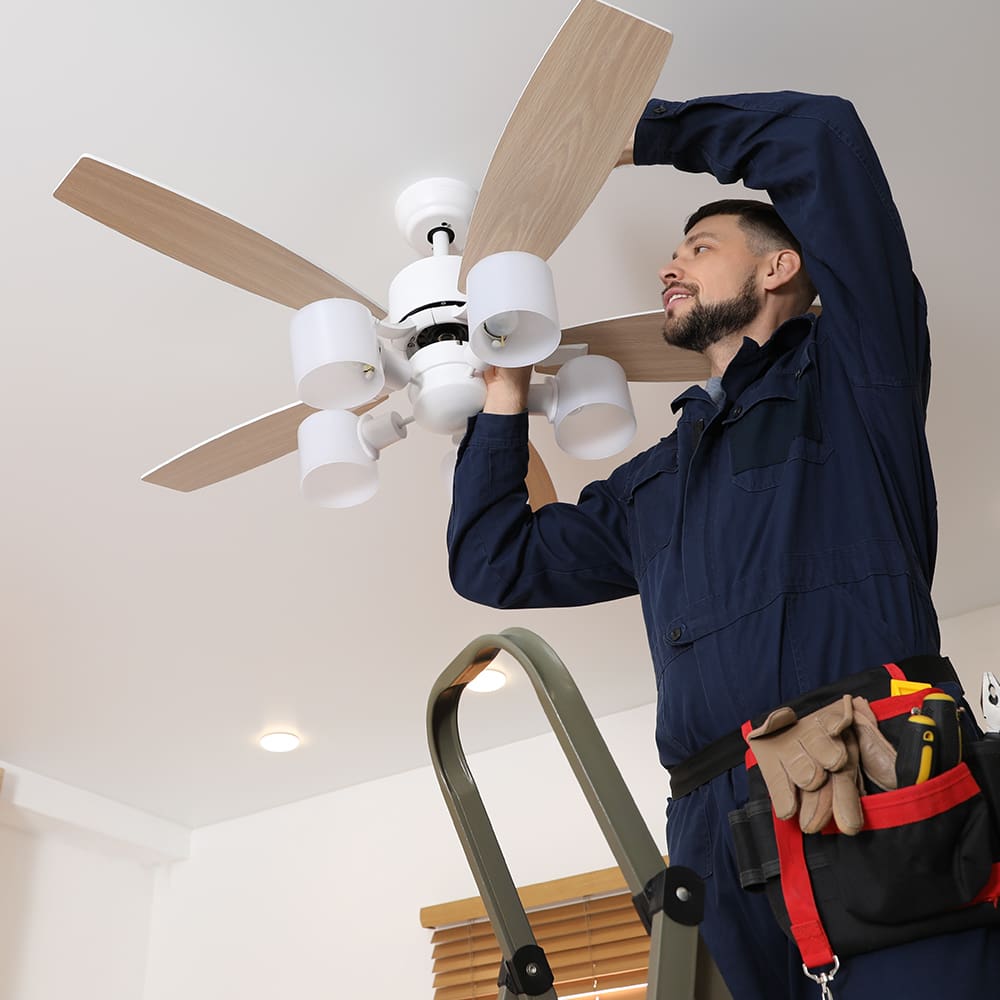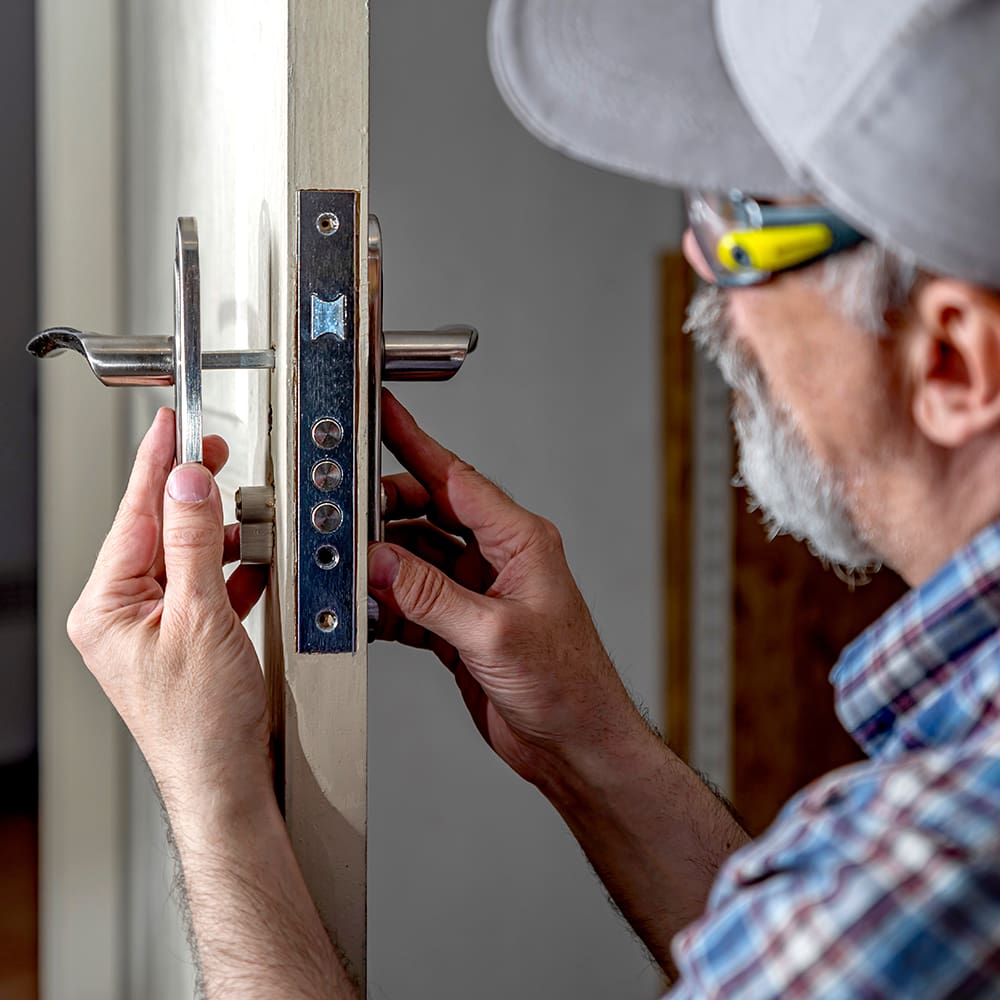How Much Will It Cost to have a Ceiling Fan Installed? What Homeowners Need to Know

Ceiling fans are a great addition to any home. They can cool down a room in the summer and distribute heat in the winter. If you're a homeowner considering adding a ceiling fan, you might be wondering about the costs involved. This blog post will break down everything you need to know about ceiling fan installation costs, ensuring you're well-informed before taking the plunge.
In this article
Ceiling fans are a great addition to any home. They can cool down a room in the summer and distribute heat in the winter. If you’re a homeowner considering adding a ceiling fan, you might be wondering about the costs involved. This blog post will break down everything you need to know about ceiling fan installation costs, ensuring you’re well-informed before taking the plunge.
Why Install a Ceiling Fan?
Adding a ceiling fan to your home can enhance comfort and energy efficiency. It circulates air to create a more consistent temperature, reducing the need for heating and cooling. This means potential savings on your utility bills. Plus, a stylish ceiling fan can add a touch of elegance to any room.
Factors Affecting Ceiling Fan Installation Cost
The cost to install a ceiling fan can vary widely based on several factors. Here are the main ones to consider:
Type of Ceiling Fan
Ceiling fans come in various types, from standard models to more advanced ones with integrated lighting and remote controls. The more features your fan has, the higher the cost for both the fan and its installation.
Existing Wiring
If your home already has the necessary wiring in place, the installation process will be simpler and less expensive. However, if new wiring needs to be installed, this will add to the overall cost.
Labor Costs
Labor costs can differ depending on your location and the complexity of the installation. Hiring a licensed electrician ensures the job is done safely and up to code but may increase the cost.
Average Cost of Ceiling Fan Installation
On average, homeowners can expect to pay between $100 and $300 for ceiling fan installation. This includes labor and basic materials. However, this cost can increase if you choose a high-end fan or require additional electrical work.
Basic Installation
For a basic ceiling fan installation with existing wiring, you might spend around $100 to $150. This covers the labor to mount the fan and connect it to your home’s electrical system.
Additional Wiring
If additional wiring is required, the cost can rise to between $150 and $300. This extra cost covers the labor and materials needed to run new wiring from your electrical panel to the ceiling fan location.
High-End Fans
For high-end fans with advanced features, you can expect to pay between $200 and $500 or more. The increased cost reflects the additional time and expertise required for a proper installation.
DIY vs. Professional Installation
Some homeowners might consider installing a ceiling fan themselves to save money. While this is possible, it’s important to weigh the pros and cons.
DIY Installation
Installing a ceiling fan yourself can save on labor costs, but it requires a good understanding of electrical work. Incorrect installation can lead to safety hazards, including electrical fires.
Professional Installation
Hiring a professional ensures the job is done correctly and safely. Professionals have the tools and expertise to handle any challenges that may arise during installation. While it may cost more upfront, it can save you from costly mistakes down the line.
Choosing the Right Professional
If you decide to hire a professional, it’s important to choose the right one. Here are some tips:
Check Credentials
Ensure the electrician is licensed and insured. This provides peace of mind that they are qualified to handle the job safely.
Get Quotes
Obtain quotes from multiple electricians to compare prices. Be sure to ask for a detailed breakdown of costs to understand what you’re paying for.
Read Reviews
Look for reviews or ask for references. Previous customer experiences can give you insight into the quality of the electrician’s work and customer service.
Additional Costs to Consider
While the main costs are for labor and materials, there are a few additional expenses to keep in mind:
Permits
Depending on your location, you may need a permit for electrical work. Check with your local government to see if this applies to your project and factor this into your budget.
Accessories
You might want to purchase additional accessories for your ceiling fan, such as a remote control or specialty light bulbs. These can add to the overall cost of the installation.
Maintenance
Regular maintenance ensures your ceiling fan operates efficiently. This can include cleaning the blades and checking the balance. While these tasks are usually minimal, they are worth considering as part of the long-term cost.
Conclusion
Installing a ceiling fan can enhance your home’s comfort and energy efficiency, but it’s important to understand the costs involved. By considering the factors outlined in this post, you can budget effectively and make an informed decision. Whether you choose to do it yourself or hire a professional, knowing what to expect can help you achieve the best results.




